Have you every wondered what’s this beautiful pink clay everyone’s using? Well, in my experience, rose clay is a type of kaolin clay. It’s very soft and fine, rich in silica and minerals, and has a neutral pH balance. Kaolin clays are considered the most moderate and balanced, which makes them perfect for almost any skin type. Rose clay benefits the skin in many ways. So, join me as I explore the incredible benefits of rose clay and what makes it so unique for our skin.
Let’s go over them.
What Is Rose Clay
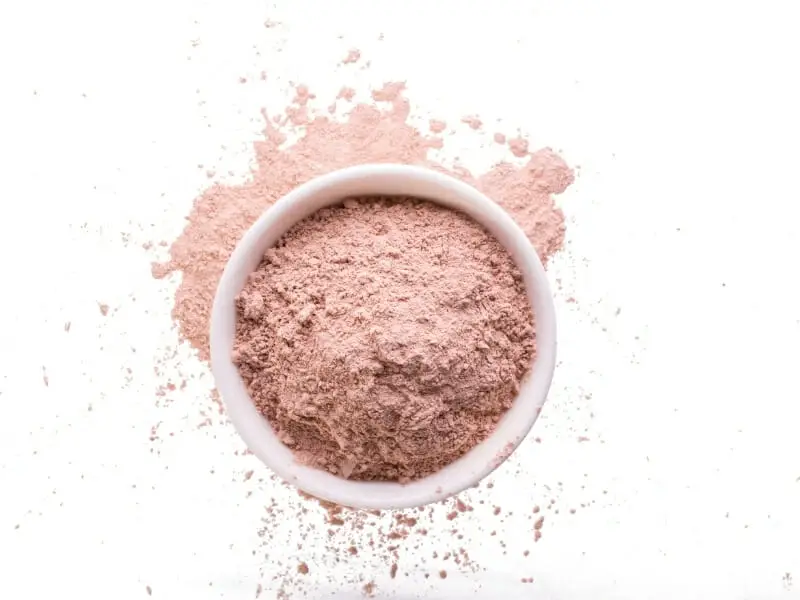
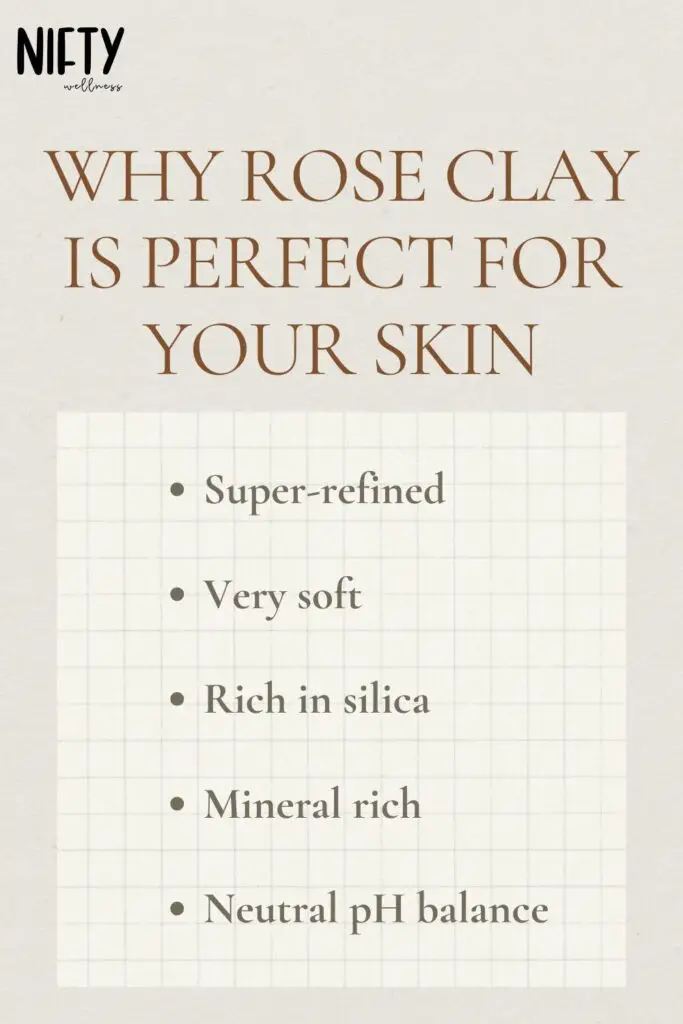
So as we’ve mentioned, rose clay is a type of kaolin clay. It’s super-refined, very soft, rich in silica and other minerals, and has a neutral pH balance. It has nothing to do with roses, though.
Rose clay is named after its color, which ranges from pale pink to deep purple. It’s also commonly named pink clay, but I guess rose clay is more poetic.
What is rose clay made of then? You might ask. Well, it’s made of rocks originally mined in Brazil. But, you can get rose clay from a multitude of other countries, which brings us to the next section.
Types Of Rose Clay

There are three common types of rose clay, and they’re mostly the same in terms of texture, mineral composition, and benefits. But they do have some slight differences.
French Rose Clay. As the name suggests, this rose clay is harvested in France. It’s a combination of white and red kaolin clays, and it’s rich in kaolinite, iron, illite, montmorillonite, and calcite. Because it’s a combination, French rose clay benefits both dry skin and oily skin.
Australian Pink Clay. Again, as the name suggests, this type is harvested in Australia, and it’s considered a pure rose clay (not mixed with anything). It’s rich in magnesium, selenium, zinc, silica, and calcium.
Rose Kaolin Clay. This type is a mix of two kaolin clays, white and pink kaolin. Like French rose clay, it takes the best of both worlds—white kaolin’s benefits for sensitive skin and pink kaolin’s benefits for oily skin.
Check out our blog 5 Incredibly Powerful Buckwheat Honey Benefits & Uses. Discover the natural goodness of buckwheat honey!
Rose Clay Benefits
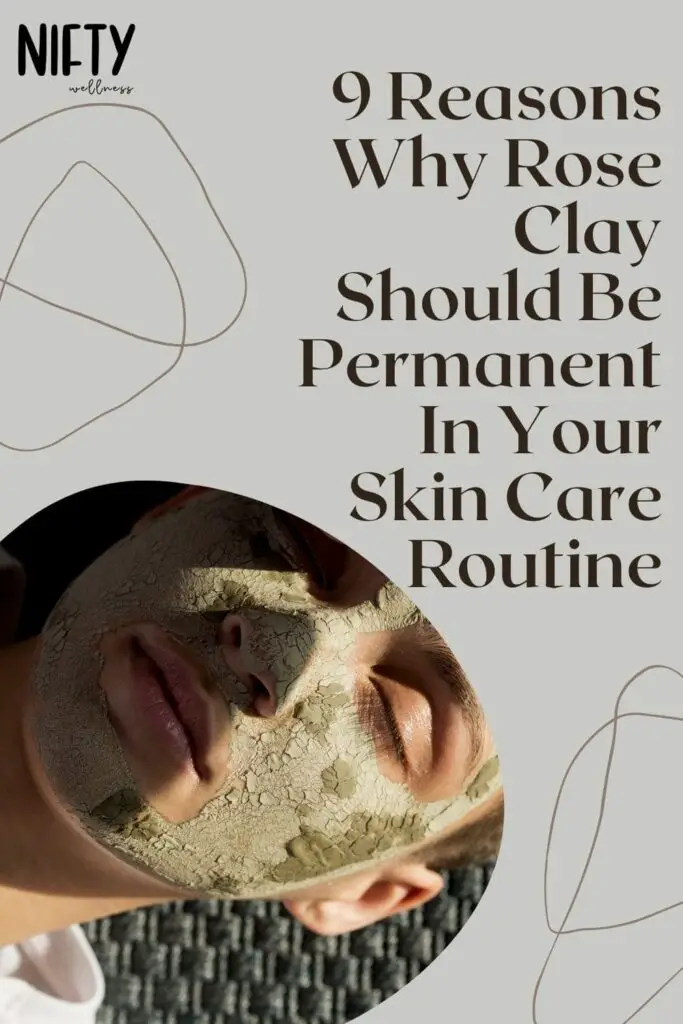
Embarking on the journey of rose clay benefits opens the door to a world of skincare wonders. Known for its delicate yet powerful properties, rose clay has been a game-changer in my skincare routine. Let’s delve into the myriad ways this enchanting pink clay works its magic, offering many benefits that have become essential for nurturing healthy and radiant skin.
Heals Dry & Sensitive Skin
Because of its fine texture, neutral pH balance, minerals, and silica rose clay is able to penetrate and heal damaged skin without being obtrusive and causing more harm than good. It’s been a gentle saviour for my dry and sensitive skin.
Reduces Acne & Blemishes


The many different minerals in rose clay help to heal and prevent acne and blemishes. The silica is also known to enhance collagen production, which results in stronger and healthier skin. As I’ve observed, it offers a natural solution to skincare challenges.
Locks Moisture In
As with most clays, rose clay will help lock in your natural moisture, thus preventing cracking, scaliness, and irritation. However, rose clay will do it in a non-obtrusive manner, as opposed to many other clays. It has been instrumental in preventing cracking, scaliness, and irritation, leaving my skin feeling supple and nourished.
Better Skin Elasticity


As we’ve mentioned, silica enhances collagen production, which leads to healthier, more elastic skin. Paired with the locked-in moisture and minerals, you can expect your skin to be less saggy and more elastic. It’s been a welcomed remedy for maintaining a more youthful and vibrant appearance.
Replenishes Natural Minerals
With its decadent array of minerals, as I’ve witnessed, rose clay becomes a nutrient-rich treat for the skin. Rose clay contains many different minerals. Magnesium, selenium, zinc, and iron, to name a few. These will soak in, nourishing and replenishing your skin.
Reduces Inflammation

Many of the minerals in rose clay have anti-inflammatory effects, which, paired with the clay’s gentle nature, make for a perfect treatment for skin inflammations such as eczema, psoriasis, cellulitis, and more. Its gentle nature has relieved my skin, soothing irritations and redness.
Light Exfoliation
Rose clay does have some light exfoliation effects; it will help clean your skin of toxins and dead skin. It has become a staple in my routine, offering a gentle and refreshing way to maintain a clear complexion.
Minimizes Blackheads
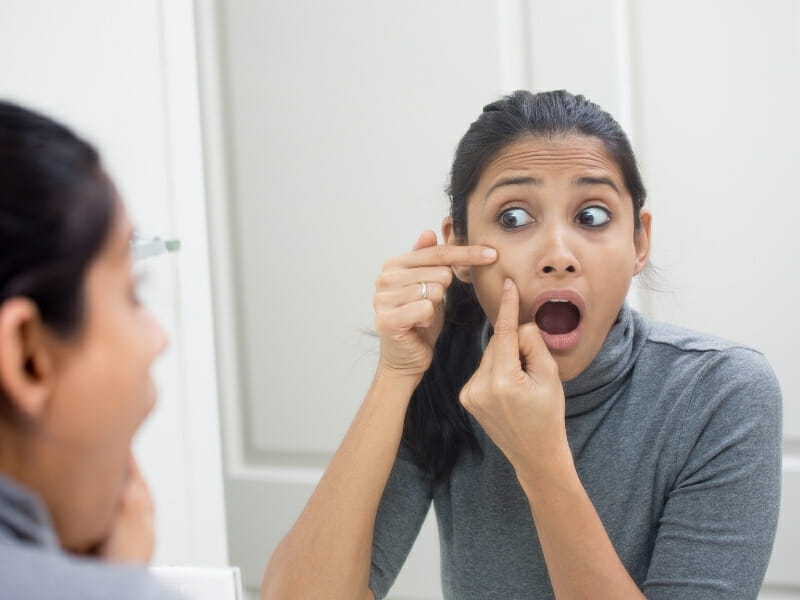
While this is not unique to rose clay, it does help draw oils and toxins out of the skin as many other clays do. The unique benefit is that it does so gently, making it perfect for sensitive skins suffering from blackheads. Its suitability for sensitive skin adds an extra layer of benefit.
Promotes Cell Renewal
Thanks to its minerals and silica, rose clay benefits and promotes cell renewal. It has actually been used traditionally for healing wounds precisely because of this benefit. Its traditional use for healing wounds aligns with its ability to rejuvenate and refresh my skin, leaving me with a healthy and radiant glow.
Read our blog Creatine Benefits, Side Effects & More: Is It Powerful? Discover how this powerhouse supplement boosts strength, endurance, and muscle growth.
Types Of Kaolin Clay
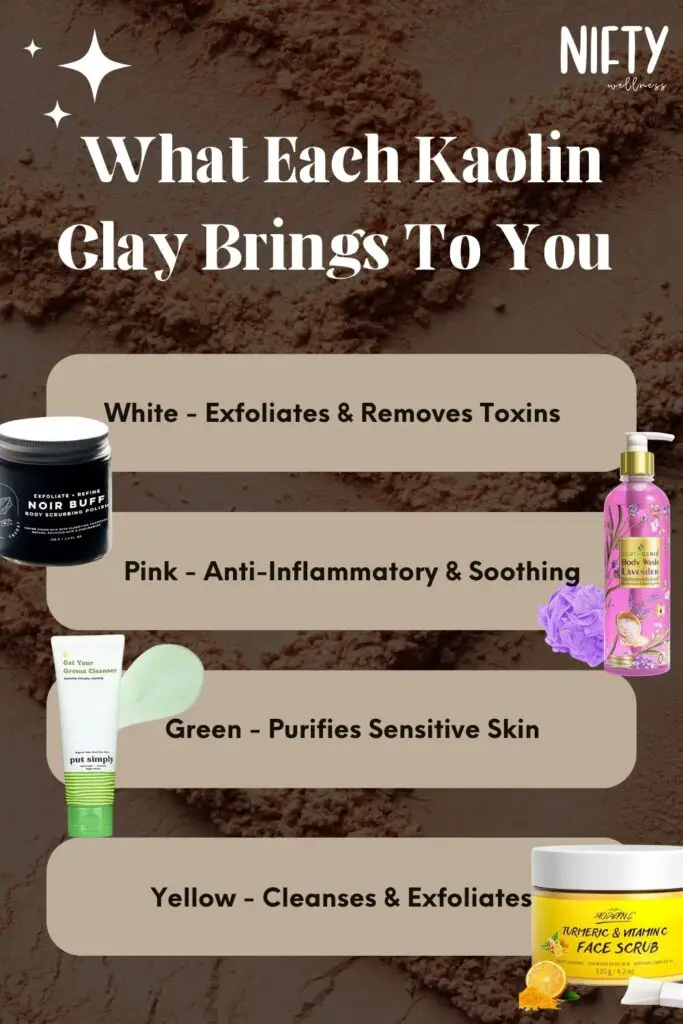
So as we’ve mentioned, some rose clays are combinations of white kaolin clay and pink kaolin clay. What does that mean?
Well, there are five types of kaolin clay; white, pink, green, grey, and yellow. Well, there’s also the “basic” earth clay, but we won’t get into that.
Each has its own benefits, although they mostly parallel each other. Rose clay will always be made of either pink or a combination of pink and white.
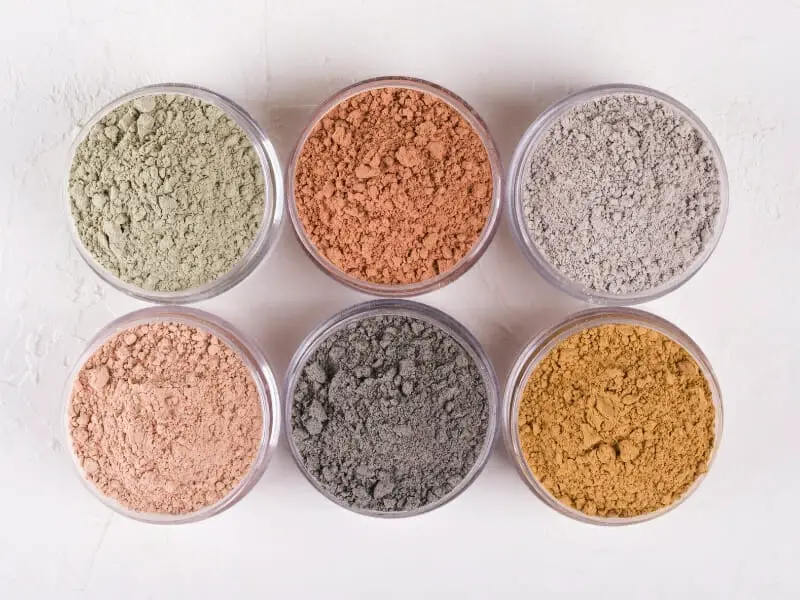
Let’s see the benefits of each clay.
White Kaolin Clay. This is the universal clay that is used in many different cosmetic products. It’s good for most skin types, and it’s known to exfoliate, unclog pores, and draw out oil and toxins.
Pink Kaolin Clay. This is our beloved rose clay in its pure form. It’s perfect for sensitive skins and has anti-inflammatory, exfoliating, soothing, and balancing properties. It’s also full of skin-loving minerals.
Green Kaolin Clay. This clay is considered the gentle cleaner. It’s known for cleaning impurities and absorbing excess oils without absorbing the skin’s natural moisture. It’s perfect for purifying sensitive skins.
Yellow Kaolin Clay. While this clay is also soft and refined, it’s slightly stronger than the others. Still, it’s safe on most skin types and provides minerals as well as cleansing and exfoliating properties.
Grey Kaolin Clay. This is the so-called crude clay. It’s less suitable for direct use and usually used as a basis for cosmetic products. Although, similar to the other kaolin clays, it’s gentle and rich in minerals, albeit less than the other types.
Rose Clay Uses
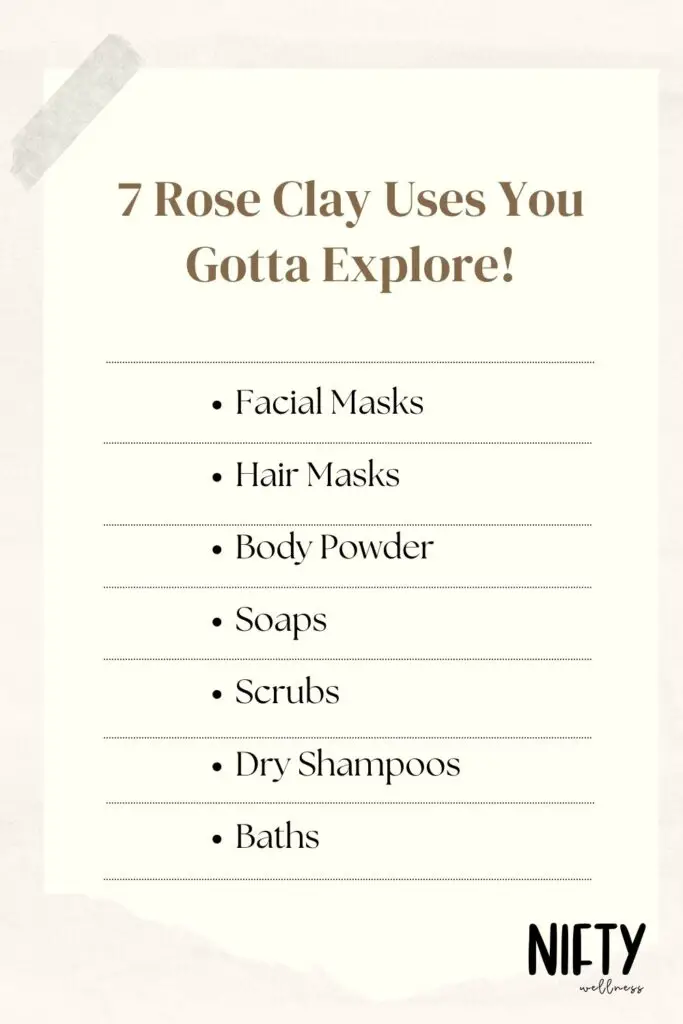
Because rose clay is so rich in minerals and silica, as well as gentle and non-obtrusive, it’s perfect for a multitude of uses. Some of the most popular ones:
- Facial Masks
- Hair Masks
- Body Powder
- Face & Body Soaps
- Scrubs
- Dry Shampoos
- Baths (Mineral Soaks)
Conclusion
In my skincare journey, embracing the myriad benefits of rose clay has been a transformative experience.
So as you can see, rose clay benefits the skin in many different ways. It exfoliates, purifies, nourishes, and more. It’s especially useful if you have sensitive or damaged skin, and it’s suitable and beneficial for things other than skin.
So, are you going to try it? Let us know in the comments below! And if you’re looking for other unique ways to keep your skin healthy, check out our article about bamboo benefits.
Frequently Asked Questions (FAQs)
Is rose clay suitable for all skin types?
Yes, rose clay is suitable for all skin types. It’s fine texture and neutral pH make it gentle on sensitive skin, while the richness in minerals benefits various skin conditions. Whether your skin is oily, dry, or somewhere in between, rose clay can be a versatile addition to your skincare routine, providing exfoliation, purification, and nourishment without irritating.
How often should I use rose clay in my skincare routine?
Using rose clay 1-2 times a week is a good start for most skin types. If your skin is oily, you can use it more often, while those with dry or sensitive skin may want to limit usage to avoid over-drying. Pay attention to how your skin responds, and adjust frequency accordingly for a balanced and effective skincare routine.
Can rose clay help with acne-prone skin?
Certainly! Rose clay can be beneficial for acne-prone skin. Its minerals work to heal and prevent acne, and the gentle nature of the clay helps draw out impurities without irritating them. Using rose clay in your skincare routine may improve skin and reduce acne breakouts. Always patch-test first and monitor how your skin responds for the best results.
Are there any DIY recipes for rose clay masks?
Absolutely! Creating a DIY rose clay mask is easy. Mix rose clay with water or other skin-loving ingredients like yogurt or honey to paste. Apply it to your face, let it dry, and rinse off. Experiment with ingredients to suit your skin, like adding a drop of jojoba oil for extra moisture. Just ensure patch-testing before trying any new DIY recipe.
What makes rose clay environmentally friendly?
Rose clay is environmentally friendly because it’s a natural mineral sourced from the earth. Its extraction has minimal impact, and it doesn’t contain harmful chemicals. Being biodegradable, it doesn’t contribute to environmental pollution. Moreover, its versatile uses in skincare reduce the need for synthetic products, aligning with eco-friendly practices. Choosing rose clay supports sustainable beauty routines that are gentle on your skin and the environment.
